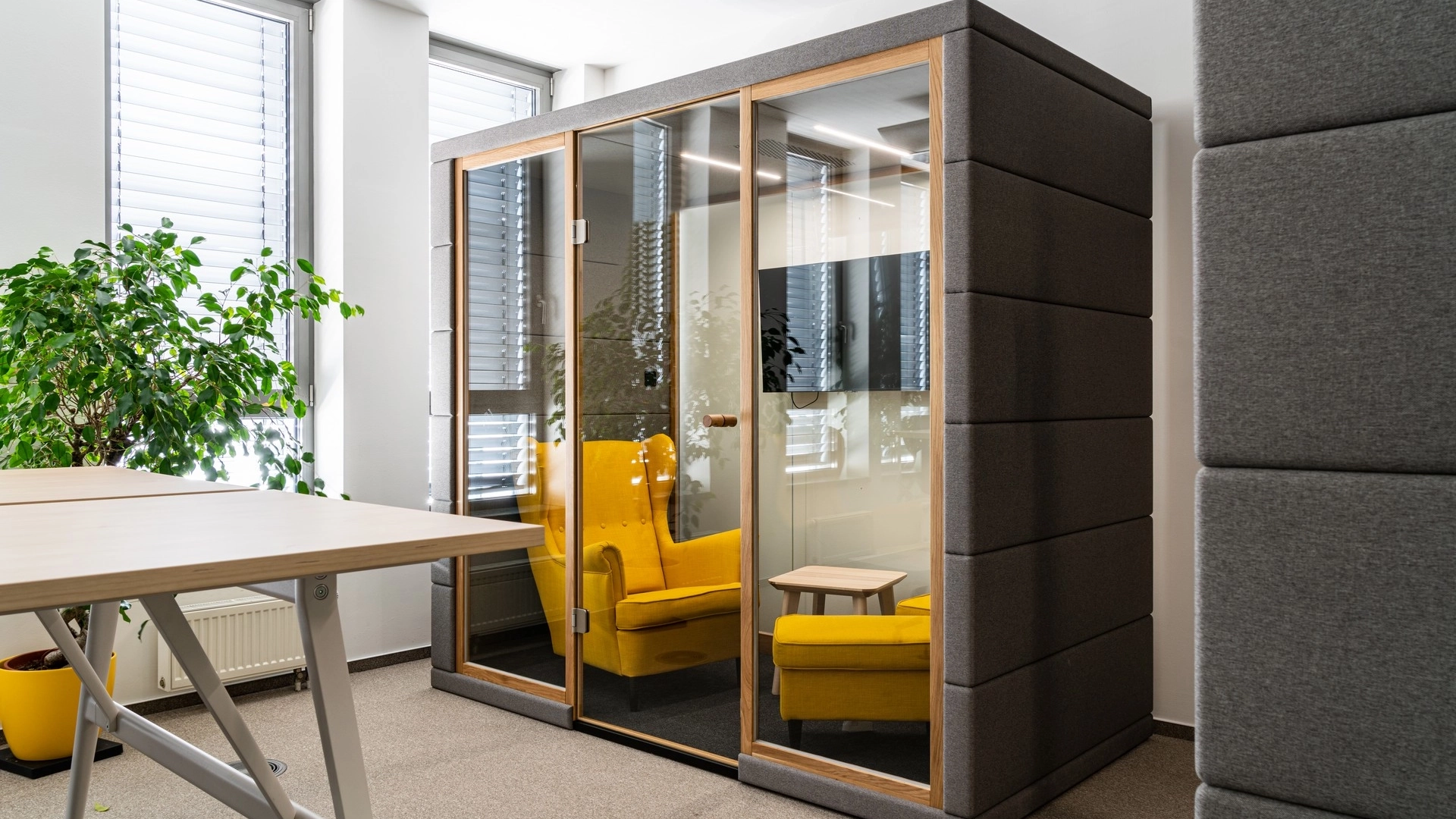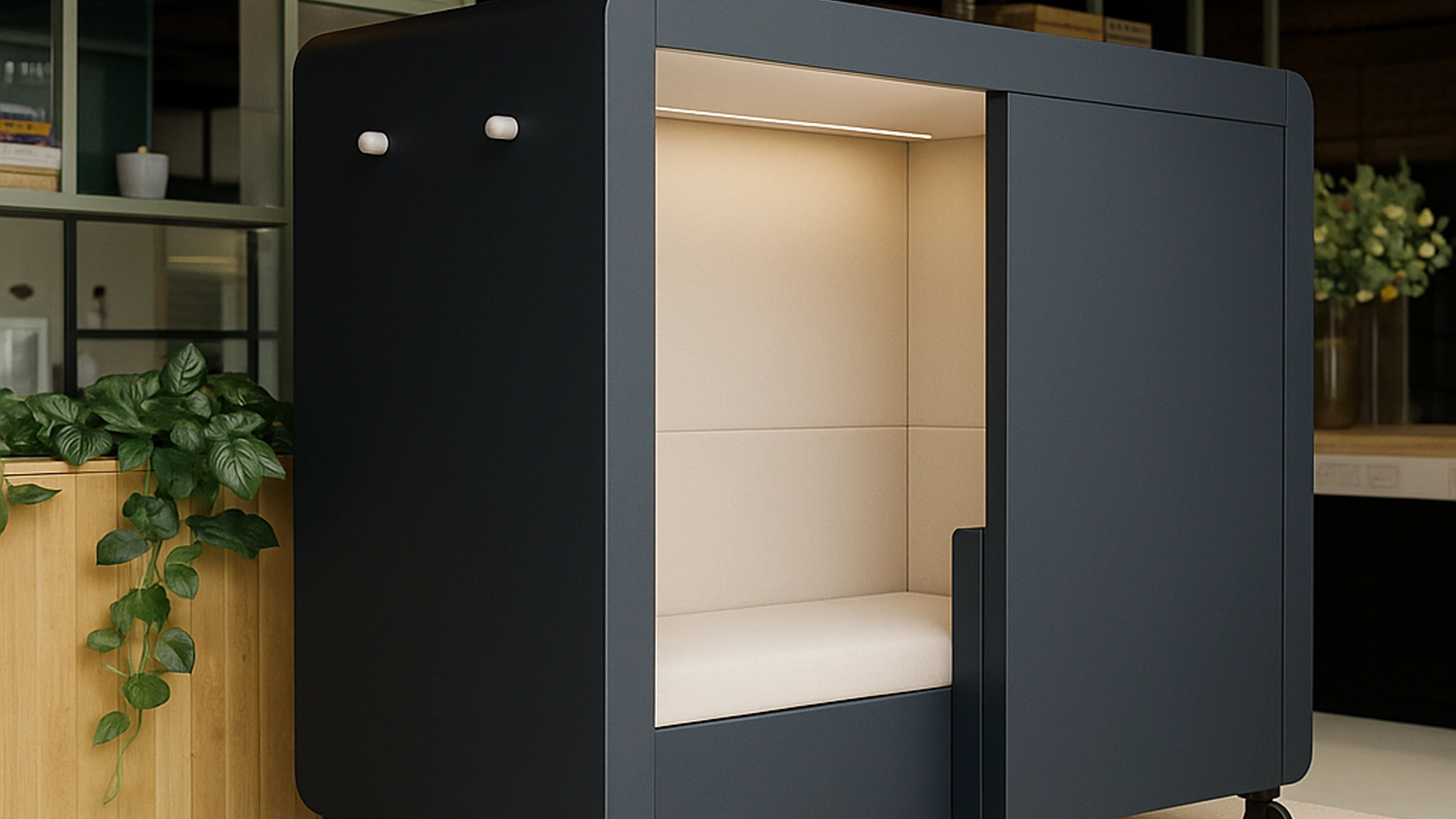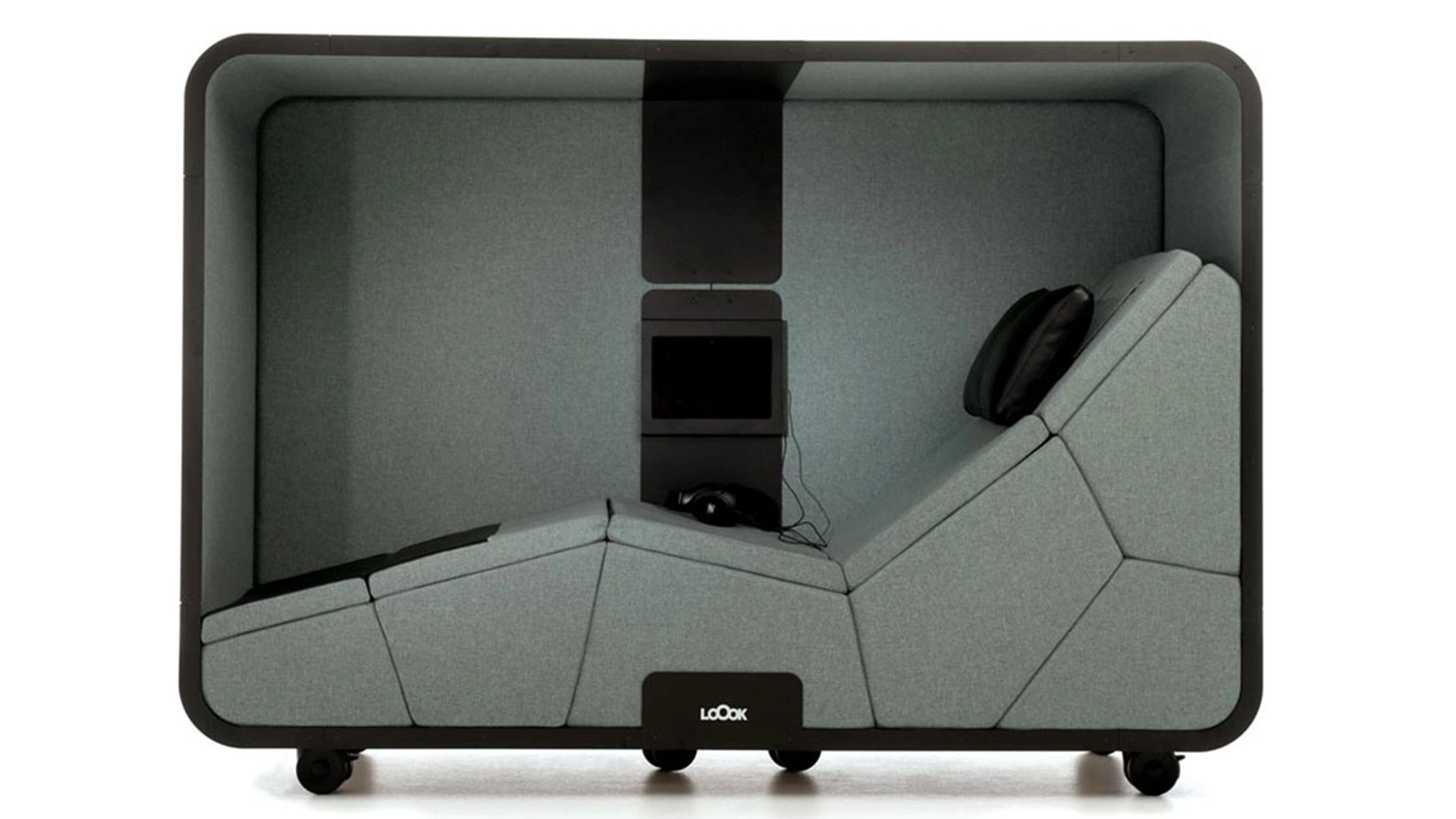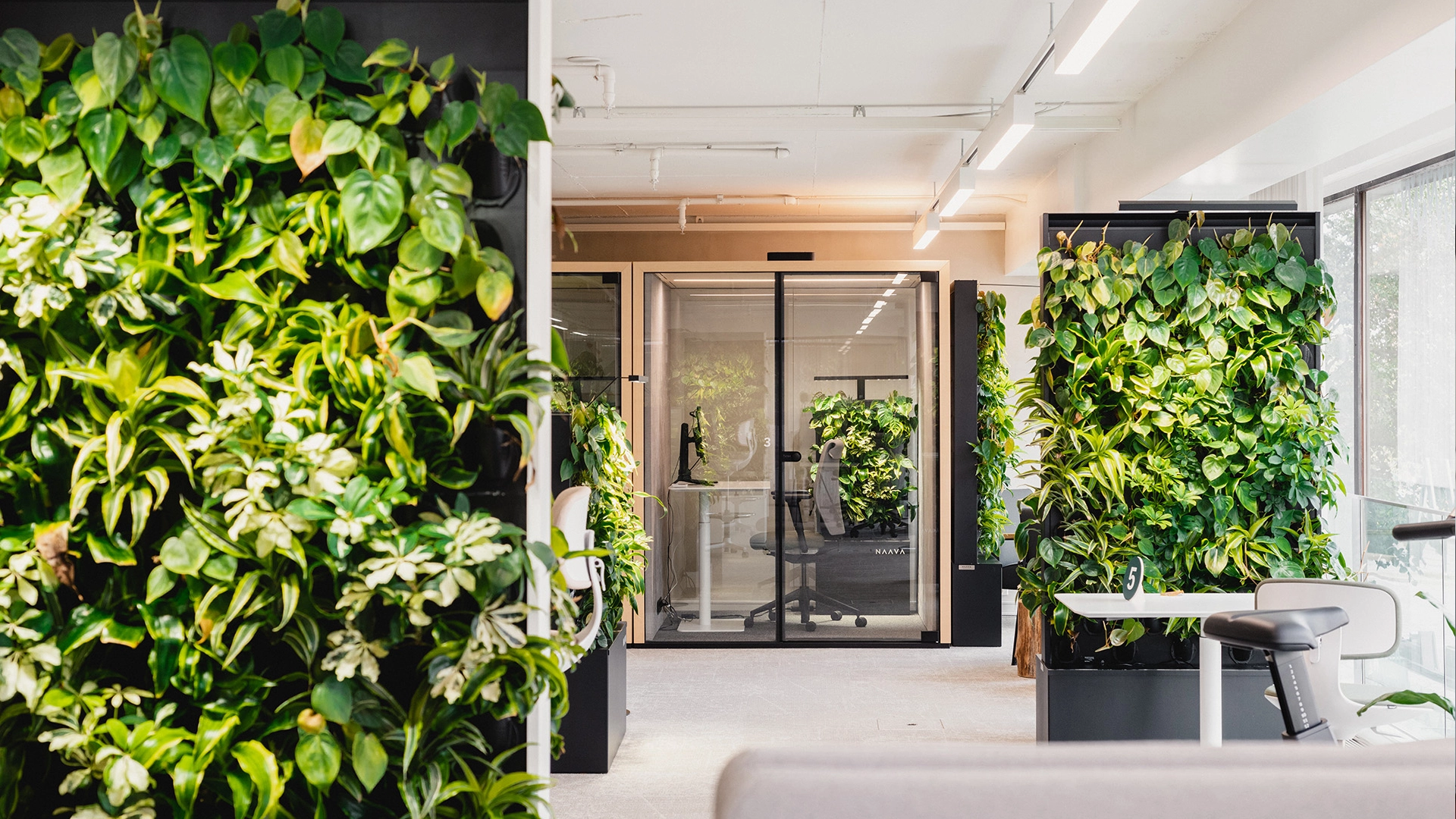
Creating a thriving workplace today goes far beyond just having ergonomic desks and spacious meeting rooms — it’s about ensuring employee wellbeing is prioritised alongside productivity. In fact, employee wellbeing is now a key indicator of overall workplace success. Companies that take a proactive approach to supporting the mental and physical health of their staff foster a more positive work environment, greater job satisfaction, and ultimately, increased productivity. As organisations increasingly recognise the direct link between a happy workforce and higher performance, they are looking for innovative ways to support their employees’ mental health, reduce stress, and improve focus.
Safe and quiet environment
One of the most impactful solutions that has emerged in recent years is the creation of workplace wellness rooms. These dedicated spaces are designed to provide employees with a safe and quiet environment where they can disconnect from the hustle and bustle of the main office. With the demands of modern work life often leading to burnout and exhaustion, wellness rooms serve as an invaluable resource. They offer a chance for employees to take a break, recharge, and return to their tasks feeling refreshed, focused, and with a renewed sense of energy.
Wellness rooms can take many forms, depending on the needs of the organisation and its employees. Some might be equipped with comfortable seating, calming lighting, and soothing sounds, while others might include features like meditation pods, massage chairs, or even yoga spaces. The goal is to create an environment that allows individuals to relax, decompress, and prioritise their mental health, all while still being in the proximity of their work.
Wellness as a concept extends beyond the absence of illness and disease; it represents a proactive, holistic state of optimal wellbeing that encourages individuals to thrive rather than simply avoid health problems.
Providing a mental reset
The benefits of wellness rooms are wide-ranging. For one, they provide a much-needed sanctuary for employees to escape the distractions of a busy office, which can often contribute to stress and mental fatigue. Stepping into a designated wellness space gives individuals the opportunity to clear their minds, practice mindfulness, or simply enjoy some quiet time. This mental reset can lead to greater concentration, clearer decision-making, and improved creativity once employees return to their desks. Wellness rooms also support multiple dimensions of wellbeing, such as emotional, physical, and social health, recognizing that true wellness involves addressing all interconnected aspects of a person’s life.
Moreover, wellness rooms can play a significant role in preventing burnout. In today’s fast-paced work culture, employees are frequently expected to be “on” at all times. This constant demand for focus can eventually lead to stress and mental exhaustion. By offering a designated space where employees can rest and recharge, companies help mitigate the risk of burnout, ensuring their staff remains engaged and motivated in the long term.
Prioritising work-life balance
Creating a wellness room is not just about providing a physical space — it also sends a strong message to employees that their health and wellbeing are valued. This can improve employee retention and attract top talent who are seeking a workplace that prioritises work-life balance and mental health.
Additionally, it can help build a culture of openness where employees feel more comfortable discussing mental health challenges without fear of stigma. The aim of wellness rooms is to optimise overall wellbeing, not just prevent illness, by fostering a state of health that goes beyond simply avoiding disease.
In the modern workplace, wellness rooms are quickly becoming a must-have feature for companies that want to enhance both employee satisfaction and performance. By embracing this trend, organisations can create a healthier, more supportive environment that encourages wellbeing, productivity, and long-term success.
Ultimately, investing in workplace wellness is not just an investment in physical spaces but in the overall success of the company and its people. Looking to the future, prioritising wellness can help reduce the risk of disease and support long-term health outcomes for employees, ensuring a thriving workforce for years to come.
1. A Space for Mental Health Support
A wellness room provides employees with:
- Privacy for decompressing during stressful moments
- A calming environment to help manage anxiety or pressure
- A supportive setting to process feelings and emotions.
- A safe space for conversations about mental health with colleagues or managers
Wellness rooms can also foster healthy relationships by offering a safe space for open and supportive conversations.
2. Reducing Stress & Anxiety
Constant exposure to noise, tight deadlines, and busy environments can take a toll on employees’ mental health. Making a positive change in stress management often begins with small steps, such as utilizing wellness rooms to support new routines.
Wellness rooms:
- Offer a quiet retreat from workplace chaos
- Allow staff to reset before returning to their tasks
- Can reduce burnout rates and absenteeism
Forming new habits to reduce stress can take an average of 66 days, and wellness rooms support this process by providing a consistent environment for these habits to form, increasing the likelihood of successful change.
3. Supporting Focus and Creativity
Stepping into a wellness room isn’t just for rest — it can also be a space for:
- Creative thinking away from distractions
- A source of inspiration for new ideas and creative solutions.
- Problem-solving in a calm, pressure-free setting
- Regaining focus quickly after challenging tasks
The environment of a wellness room can positively influence focus and productivity, helping employees reach their full potential and approach tasks with greater confidence.
4. Promoting Healthy Posture and Movement
Wellness rooms can be equipped with:
- Height-adjustable desks to encourage movement and support proper posture
- Comfortable, supportive seating
- Spaces to stretch or use light exercise equipment
Regular maintenance of wellness room equipment and furniture is essential to ensure ongoing support for physical health and overall well-being.
5. Maintaining Professionalism in Challenging Situations
For roles that require sensitive or emotional conversations — with clients, patients, or team members — wellness rooms:
- Provide a private, controlled setting
- Reduce the risk of disruptions or overheard conversations
- Allow staff to remain composed and professional
Taking proactive actions, such as using a wellness room for difficult conversations, helps maintain professionalism and supports employee wellbeing. It’s also important to focus on letting others support you during emotionally challenging moments in a private setting.
6. Mobility and Adaptability
Many wellness rooms are modular structures, and many are constructed as modular units for easy relocation, meaning they can be:
- Relocated if the office layout changes or the business moves
- Reconfigured to meet evolving needs
- Scaled up with additional pods or rooms as the team grows
Choosing the right model for your wellness room can make it a successful standalone project for your workplace.
7. Encouraging Autonomy
Allowing employees and staff to choose when and how they use wellness rooms:
- Gives them control over their workday and the choices they make for self-care.
- Encourages self-care without stigma
- Supports better decision-making and personal productivity
It is important to allow employees to decide when and how to use wellness rooms, so they can align their actions with their personal intentions for wellbeing.
8. Supporting Inclusivity
With accessible wellness rooms, organisations and employers play a key role in ensuring wellness rooms are accessible to all. Companies can ensure:
- Equal access for employees with mobility, disability or sensory needs
- Spaces designed in line with Equality Act 2010 guidance
- A culture of inclusivity that values every team member
Clear policies are essential to support inclusivity and accessibility in wellness room design, helping organisations and employers create environments where everyone feels welcome.
9. Designing a Wellness Room
Designing a wellness room is a thoughtful process that can transform any environment—whether at home or in the workplace—into a sanctuary for mental and physical well-being. A dedicated space, such as a garden office or garden office pod, offers the perfect setting to engage in activities that support your mind and body. By intentionally creating a room that prioritises comfort, tranquility, and functionality, you can foster an environment that encourages relaxation, mindfulness, and overall health.
When designing your wellness room, consider how the space will be used throughout the day. Will it serve as a quiet retreat for meditation, a spot for gentle exercise, or a place to recharge during busy work hours?
The flexibility of a garden office pod makes it an ideal choice, as it can be adapted to suit a range of wellness activities. Whether you’re looking to create a peaceful corner in your home or a dedicated office pod in your garden, the key is to design a room that feels inviting and supports your mental and physical health goals.
Creating a Peaceful Atmosphere
A peaceful atmosphere is essential for any wellness room, and there are several ways to achieve this. Start by maximizing natural light—large windows in a garden office or garden office pod can flood the space with sunlight, instantly boosting mood and energy.
Incorporate elements from the garden, such as potted plants or a small water feature, to bring a sense of calm and connection to nature. Using natural materials like wood for floors or walls can add warmth and texture, making the room feel more inviting.
Colour also plays a significant role in creating a soothing environment. Soft blues and greens are known to promote relaxation, while neutral tones can help the mind unwind. By thoughtfully choosing colors, materials, and decor, you can create a wellness room that feels like a true escape from the demands of daily life.
An office pod with large windows and natural finishes not only provides a functional space but also enhances the overall ambiance, making it easier to relax and recharge.
Utilising a Garden Office
A garden office pod is an excellent option for anyone looking to create a dedicated wellness room. These modern, purpose-built spaces are designed to offer privacy and quiet, away from the distractions of the main house or busy office. With features like insulation, double glazing, and contemporary design, garden office pods provide a comfortable environment year-round, making them ideal for a variety of wellness activities.
The flexibility of garden office pods means you can customise the space to fit your needs—whether you want a serene spot for meditation, a room for yoga, or a cozy nook for reading and reflection. Their modern design ensures that your wellness room not only looks great but also functions perfectly as a retreat for mental and physical health.
By choosing a garden office pod, you’re investing in a space that supports your well-being and adapts to your lifestyle, making it a valuable addition to any home or workplace.
10. Wellness Room Amenities
A well-equipped wellness room can make a significant difference in how you relax, recharge, and care for your mental health. There are a variety of amenities you can add to your garden office pod or dedicated wellness space to enhance its functionality and comfort. Consider including a private workstation for focused tasks or creative projects, a meditation area with soft lighting and cushions, and a designated space for yoga or gentle exercise.
To further elevate the atmosphere, you might add a sound system for calming music, an aromatherapy diffuser to promote relaxation, and comfortable seating for reading or quiet reflection.
The versatility of a garden office pod means you can easily incorporate these options, creating a space that suits your unique needs and preferences. By thoughtfully selecting amenities, you ensure your wellness room is a place where you can truly unwind, engage in restorative activities, and support your overall well-being.
Summary Table – How Work place Wellness Rooms Benefit Employees
| Benefit Area | How Wellness Rooms Help |
| Mental Health Support | Private space for decompressing |
| Stress Reduction | Retreat from workplace noise and chaos |
| Focus & Creativity | Calm space for deep thinking |
| Healthy Posture | Ergonomic furniture for comfort and movement |
| Professionalism | Controlled environment for sensitive conversations |
| Mobility | Modular, relocatable, and adaptable |
| Autonomy | Employee control over use of space |
| Inclusivity | Accessible to all staff members |
Popular Products from My Office Pod UK
| Product Name | Pod Type | Capacity | Key Features | Link |
| Siesta Pod | Wellness / Rest Pod | 1 | Quiet retreat designed for relaxation and mental reset | View Product |
| Delia Meeting Booth | Meeting Booth | 2–4 | Semi-enclosed booth ideal for collaborative and private conversations | View Product |
| Framery Four | Acoustic Meeting Pod | 1–4 | High-quality sound isolation, controlled sensory environment, reduced Sensory Overload | View Product |
Final Thoughts
Workplace wellness rooms are more than just a trend and nice-to-have — they are a strategic investment in your people. By giving employees space to rest, recharge, and refocus, you’re improving not only their mental health but also their ability to perform at their best and feel mentally refreshed.
Ready to Prioritise Wellbeing in Your Office?
- Contact us to discuss wellness room options
- Book an initial meeting with one of our workplace design experts
- Or call us now for immediate advice on the best solution for your team







